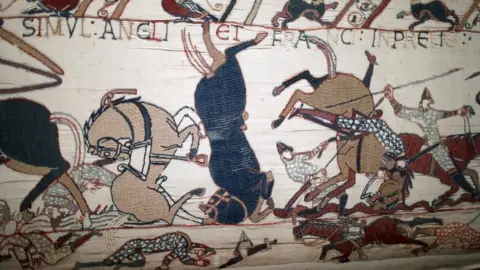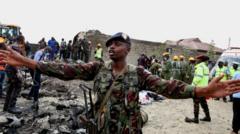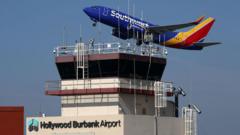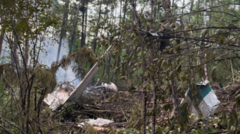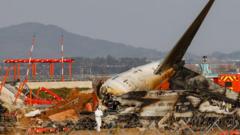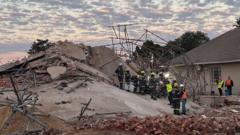The Air India Flight 171 incident, which resulted in the tragic loss of 241 passengers and 19 ground individuals after it crashed shortly after taking off from Ahmedabad last month, continues to evoke a whirlwind of unanswered questions and rising speculations. The preliminary report by India's Air Accident Investigation Bureau (AAIB), although released timely, has now ignited significant discussion regarding the implications of its findings, specifically concerning the safety measures and actions taken by the flight crew.
Under international protocols, a preliminary report is expected to be shared within 30 days after an air accident, and the AAIB fulfilled this requirement with a 15-page document released this past Saturday. However, the report stopped short of providing definitive conclusions about the cause of this devastating accident. Notably, it highlighted that two essential fuel cut-off switches were flipped from the ‘run’ to the ‘cut-off’ position shortly post-take-off, cutting off the engines’ fuel supply and leading to thrust loss. The data indicated that the engines were restarted moments too late, resulting in the crash.
While the AAIB has been at the forefront of the investigation, it is essential to note the presence of U.S. interests, given Boeing manufactures the aircraft and GE Aerospace the engines. This dual oversight adds complexity to the investigation as details regarding the pilots' actions have left room for speculation, provoking reactions from industry stakeholders.
Commentators have speculated whether the crash might relate to an intentional act by one of the pilots, igniting an outcry from the Indian Commercial Pilots’ Association. They labeled such conjectures as deeply irresponsible, emphasizing the hazards of making unfounded allegations without full contextual evidence. Air India’s CEO Campbell Wilson echoed this sentiment in a memo, cautioning against drawing premature conclusions.
Experts within the aviation community have criticized the AAIB’s approach, asserting that crucial information appears absent, thus limiting the understanding of the events surrounding the crash. Many industry professionals have expressed concern about the absence of a transcript from the cockpit voice recorder, which might provide essential context on communications between pilots around the critical moment fuel supply was cut off.
Bjorn Fehrm, an aeronautical analyst, lamented the report’s lack of transparency, emphasizing the importance of a comprehensive account to understand the sequence of events leading up to the catastrophe. Furthermore, the absence of detailed information regarding the engines’ status during the critical moments has left several technical questions unanswered.
Additionally, the preliminary report referenced a 2018 Special Airworthiness Information Bulletin from the FAA about concerns regarding fuel cut-off switches that potentially could be flipped accidentally. Despite the FAA's assurance that the matter did not compromise safety, its inclusion has led to speculation that operational errors could have had severe consequences. Criticism flew from engineering sources and air accident experts, who emphasized the need for clarity over vague insinuations within the report.
The vague nature of findings has prompted critiques regarding the investigators’ intentions, with assertions that the lack of transparency could be a calculated effort to shape public perception while avoiding explicit commentary on the crash’s cause. As it stands, those seeking clarity and closure may have to wait, as international norms dictate that final reports could take over a year to be published, prolonging the quest for answers concerning Flight 171 and the tragic events that ensued.




